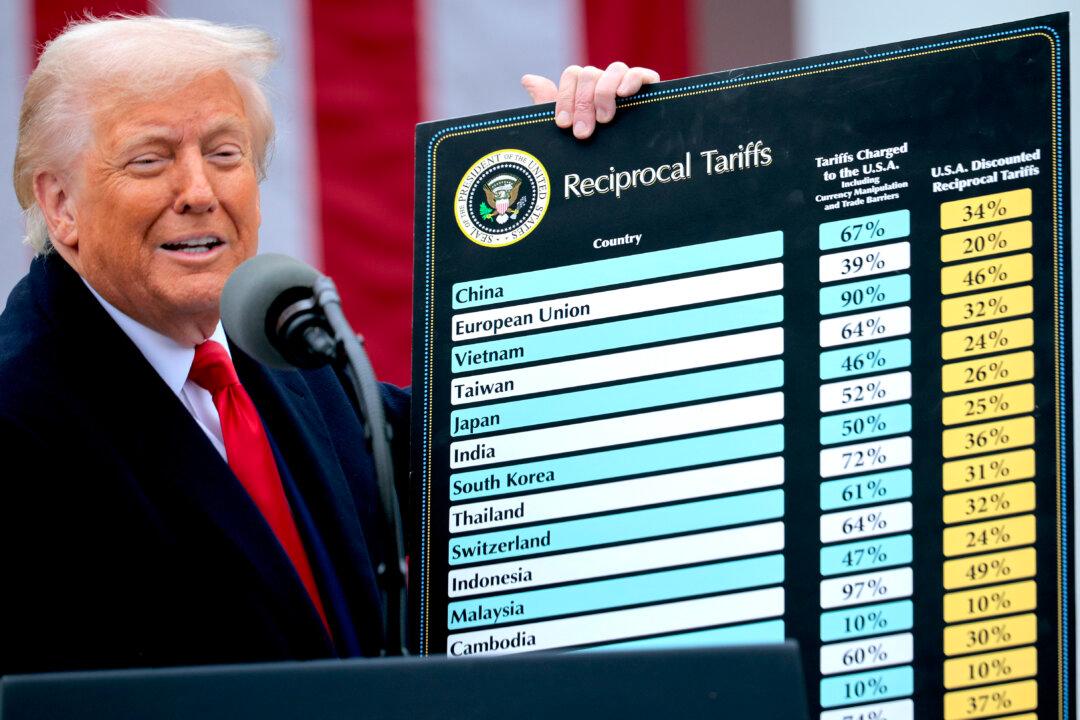WASHINGTON—The annual meetings of the World Bank Group and International Monetary Fund (IMF) held Oct. 14–20 in Washington ended with increased pessimism about the global economic outlook.
The U.S. economy, however, is “holding up relatively well,” despite rising trade worries and uncertainty across the globe.
The weakness in growth is driven by a sharp slowdown in manufacturing activity and global trade, the IMF said, as a result of heightened trade and geopolitical tensions, including Brexit.
The tariffs imposed and announced so far in the U.S.–China trade conflict would trim the global economy by 0.8 percent by 2020, according to IMF Managing Director Kristalina Georgieva.
“That is equivalent to the whole economy of Switzerland,” she told CNBC on Oct. 17.
In addition, country-specific factors in several emerging markets, as well as lower productivity growth and aging populations in advanced economies, have been a drag on global growth, according to the fund.
Georgieva said the tentative trade deal reached between the United States and China is welcome news, adding that the truce could reduce the losses from the trade war by 0.2 percent.
“And that, of course, is good news but not good enough,” she said at a press conference on Oct. 17, urging both sides to reach a comprehensive and lasting deal.
‘A Bright Spot’
The U.S. economy continues to be “a bright spot in the overall global outlook,” despite a significant slowdown abroad, according to Treasury Secretary Steven Mnuchin.The United States continues to benefit from tax reform and other pro-growth policies, he said at the annual meeting with finance ministers and central bankers.
In July, economic growth in the United States entered its 121st month, marking the longest expansion in U.S. history. And the jobless rate fell in September to a new 50-year low of 3.5 percent, while employers added a modest 136,000 jobs.
According to JPMorgan Chase CEO Jamie Dimon, a recession in the United States in the near term is unlikely as the economy is driven primarily by consumer spending, which is still strong.
“Businesses pay attention to geopolitics,” he said on Oct. 18 during a panel discussion at the Institute of International Finance annual meeting. He added that the U.S–China trade war led companies to alter their investment decisions.
‘Holding Up Relatively Well’
The domestic side of the U.S. economy is “holding up relatively well,” and that’s one of the reasons why the trade dispute with China hasn’t been a significant drag on growth, according to Beth Ann Bovino, the chief U.S. economist at Standard & Poor’s.“About 85 percent of overall economic activity in the United States comes from the domestic economy,” she said, adding that the service sector rather than manufacturing has been key to the economy.
According to Standard & Poor’s, the U.S. labor and housing market remain strong, as does consumer spending. However, the escalation of the trade war with China and weakening global growth are downside risks to U.S. economic growth.
The credit rating agency recently downgraded its growth forecasts to 2.3 percent from 2.5 percent for this year, and to 1.7 percent from 1.8 percent for next year.
Bovino said there could be a slight upward revision to forecasts if the trade truce with China lasts longer and the tariffs are suspended.
She expects another rate cut by the Federal Reserve this year to “stabilize the economy.”
“But we do think given that the economy is holding up relatively well and the problems abroad in manufacturing have not filtered into the domestic side of the equation, it looks like the United States economy can withstand and still prosper with relatively high rates,” compared to Europe and Japan, which have negative interest rates, she said.
Bovino noted that the sentiment measures in the United States have been running ahead of actual hard economic data. Weaknesses initially started in sentiment readings such as yield curve, stock market, and business confidence readings, she explained.
“We did not see it in the real economic data. Now we’re seeing a little bit of weakness there.”
This dichotomy between hard data and sentiment readings could be driven by worries over negative headlines or uncertainties about trade and geopolitical tensions, she said, which cause people to believe a recession is about to hit the U.S. economy.





